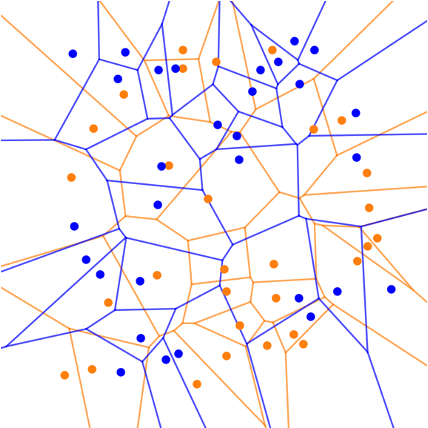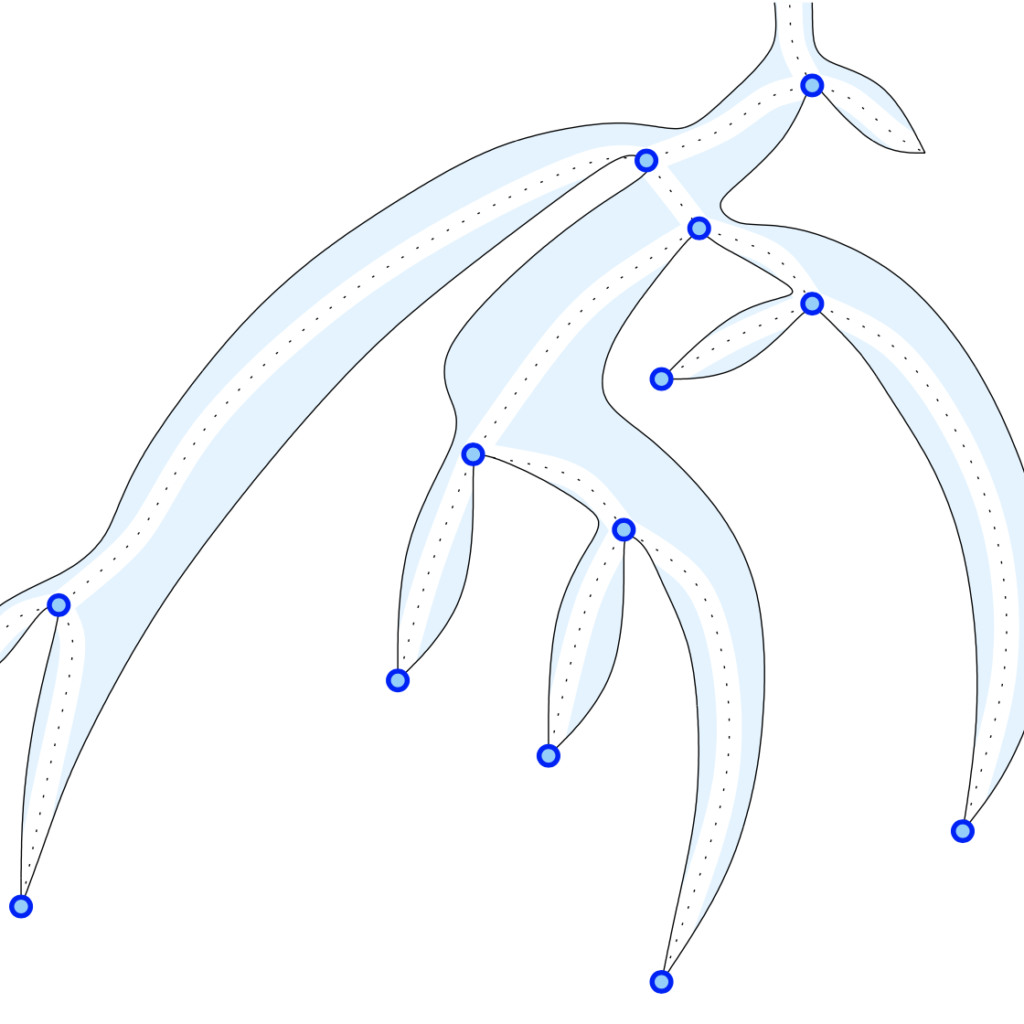PhD Projects
Computational Topology

The tumour immune microenvironment (TME), which showcases the battlefield between the cancer cells and the immune cells, carries important biological information and can vary significantly from patient to patient. Motivated by wanting to describe the geometry of these cellular arrangements, we developed a geometric and topological framework for quantifying spatial interactions between point sets. A summary of our findings, together with a collection of open questions we stumbled upon, can be found in this recent survey.
Algorithms & Data Structures

The persistent homology (PH) of a function encodes topological features of a space at different spatial resolutions. If the function or the space undergo a local change can we update the PH efficiently or shall we just recompute it from scratch? In the context of graph persistence, we gave a geometric characterization of the persistent pairs, which we used to construct an efficent data structure for maintaining them: the banana tree. For dynamic time series data, we showed that banana trees are fast in practice, outperforming the state of the art static algorithm in many realistic settings.
Computational Geometry

What geometric structures are useful to model a collection of data points? What are their properties? Natural candidates are Voronoi tessellations, Delaunay mosaics and their higher order generalisations. Together with colleagues at ISTA, we try to make sense of these objects through the lenses of discrete Morse theory and persistent homology. See [1, 2, 3] or my PhD thesis.